Safety Gear Every Contractor Needs: Protect Yourself with These Top Picks
For contractors, safety is paramount. Whether you're working on a construction site, in a workshop, or performing on-site repairs, the right safety gear can be the difference between a successful project and a serious injury. Construction and contracting work inherently involve risks, from falling objects and hazardous materials to loud noises and electrical hazards. But with the proper personal protective equipment (PPE), you can significantly mitigate these risks and create a safer working environment for yourself and your team. This comprehensive guide, brought to you by Tend Supplies, will outline the essential safety gear every contractor needs, highlighting key features, industry standards, and top product recommendations to help you make informed decisions and prioritize safety on every job. We'll cover everything from head protection to fall protection, ensuring you're equipped to handle the hazards of your trade.
Key Takeaway:
Investing in high-quality safety gear is non-negotiable for contractors. This guide provides a comprehensive overview of essential PPE, including hard hats, safety glasses, hearing protection, gloves, boots, respirators, high-visibility clothing, and fall protection. By understanding the specific hazards of your work and choosing the right safety gear, you can protect yourself from injury and ensure a safe and productive work environment. Tend Supplies offers a curated selection of top-rated safety gear to meet the needs of every contractor.
Head Protection: Hard Hats – Your First Line of Defense
Construction sites and many contracting jobs pose a significant risk of head injuries from falling objects, impacts, and electrical hazards. A hard hat is your first line of defense, and it's essential to choose one that meets industry standards and provides adequate protection.
- Types of Hard Hats:
- Type I: Protects the top of the head from falling objects.
- Type II: Protects the top and sides of the head from impacts.
- Class G (General): Rated for 2,200 volts.
- Class E (Electrical): Rated for 20,000 volts.
- Class C (Conductive): Offers no electrical protection.
- Key Features to Consider:
- Material: High-density polyethylene (HDPE) is common and durable.
- Suspension System: A good suspension system (4-point or 6-point) absorbs impact and provides a comfortable fit.
- Adjustability: Ensure the hard hat can be adjusted to fit your head size securely.
- Accessories: Slots for attaching accessories like face shields, ear muffs, and lights.
- Standards: Look for hard hats that meet ANSI/ISEA Z89.1 standards.
- Recommendations:
- MSA V-Gard Hard Hats: Known for their durability, comfort, and wide range of options.
- ERB Safety Omega II Hard Hats: Offer excellent impact protection and a comfortable suspension system.
- Fibre-Metal by Honeywell Hard Hats: Reliable brand with a variety of styles and safety ratings.
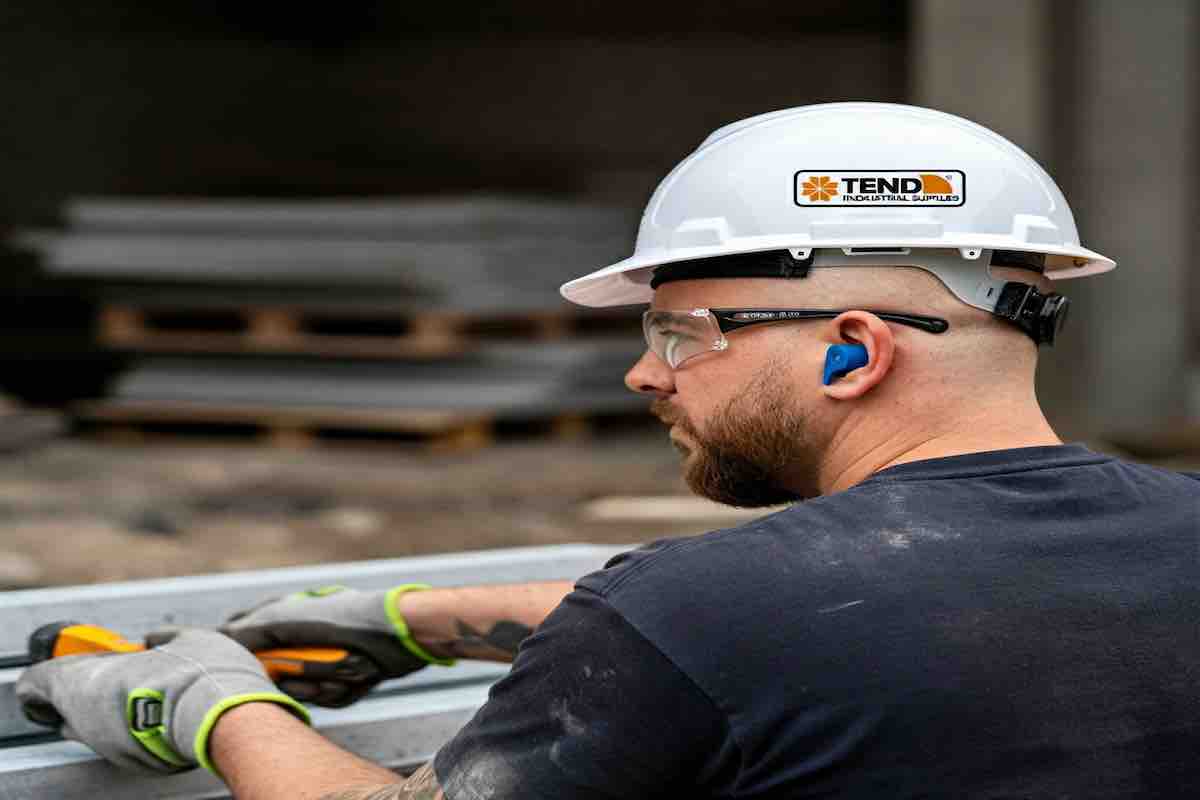
Eye Protection: Safety Glasses and Goggles – Shielding Your Vision
Protecting your eyes is crucial in any contracting job. Flying debris, dust, chemicals, and UV radiation can cause serious eye injuries.
- Types of Eye Protection:
- Safety Glasses: Provide basic impact protection and are suitable for general use.
- Safety Goggles: Offer a tighter seal around the eyes, providing better protection against dust, splashes, and impacts.
- Face Shields: Used in conjunction with safety glasses or goggles for added protection against large debris and splashes.
- Key Features to Consider:
- Impact Resistance: Look for lenses that meet ANSI Z87.1 standards.
- Lens Material: Polycarbonate lenses are the most common and offer excellent impact resistance.
- UV Protection: Choose lenses that block 99.9% of harmful UV rays.
- Anti-Fog Coating: Helps prevent fogging in humid conditions or during strenuous work.
- Comfort: Ensure the glasses or goggles fit comfortably and securely without causing pressure points.
- Recommendations:
- 3M Safety Glasses: A wide range of styles and lens options to suit various needs.
- Uvex Safety Glasses and Goggles: Known for their comfortable fit and excellent optical clarity.
- DeWalt Safety Glasses: Durable and offer good value for money.
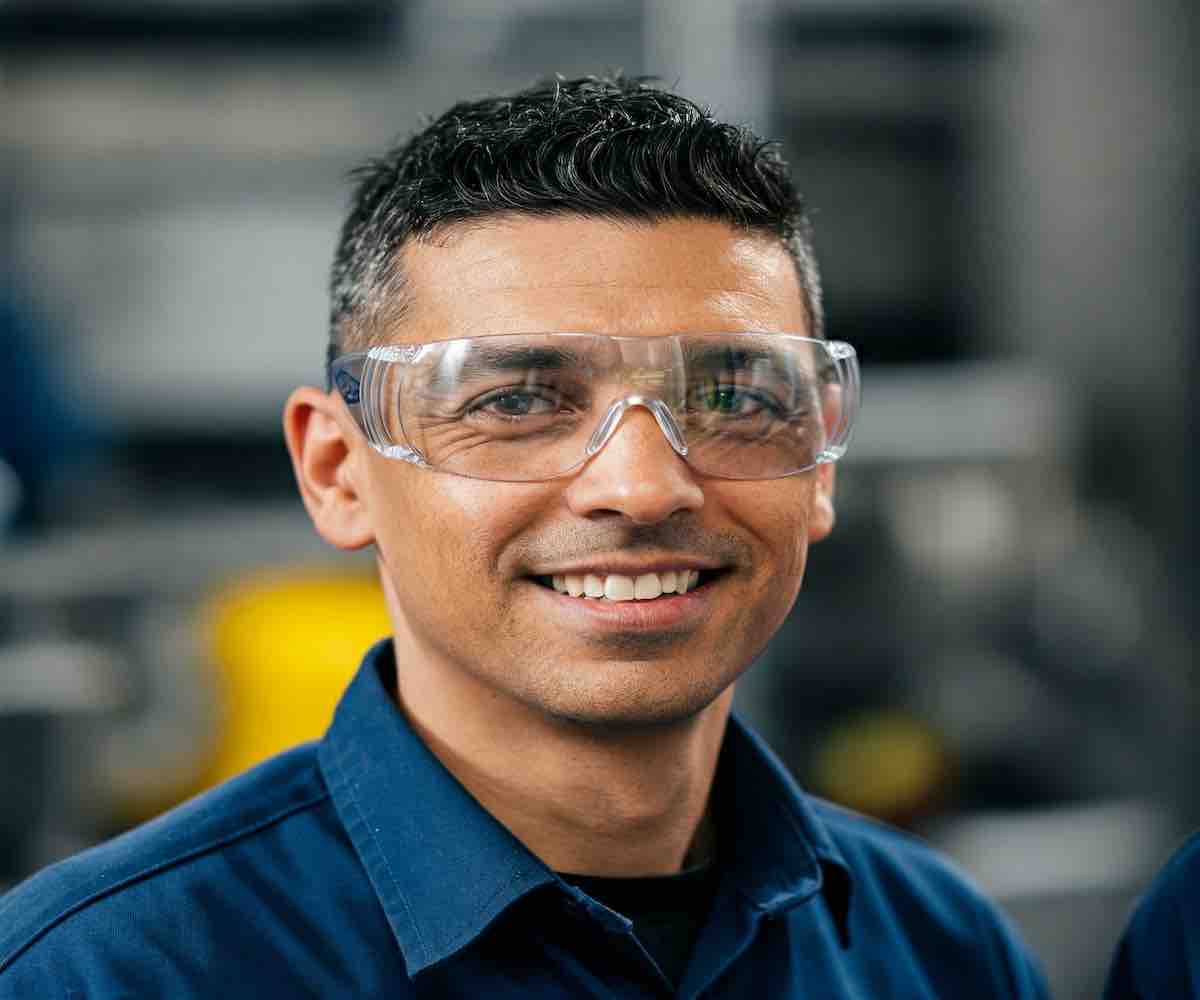
Hearing Protection: Ear Muffs and Ear Plugs – Preserving Your Hearing
Construction sites and many contracting jobs are noisy environments. Prolonged exposure to loud noises can cause permanent hearing damage.
- Types of Hearing Protection:
- Ear Muffs: Cover the entire ear and provide excellent noise reduction.
- Ear Plugs: Inserted into the ear canal and can be disposable or reusable.
- Key Features to Consider:
- Noise Reduction Rating (NRR): A higher NRR indicates better noise reduction.
- Comfort: Choose ear muffs or ear plugs that fit comfortably for extended wear.
- Material: Ear plugs are commonly made from foam, silicone, or other moldable materials.
- Recommendations:
- 3M Peltor X-Series Ear Muffs: Offer high noise reduction and a comfortable design.
- Howard Leight by Honeywell Laser Lite Ear Plugs: Popular disposable foam ear plugs with a high NRR.
- SureFire EP4 Sonic Defenders Plus Ear Plugs: Reusable ear plugs with filtered protection.
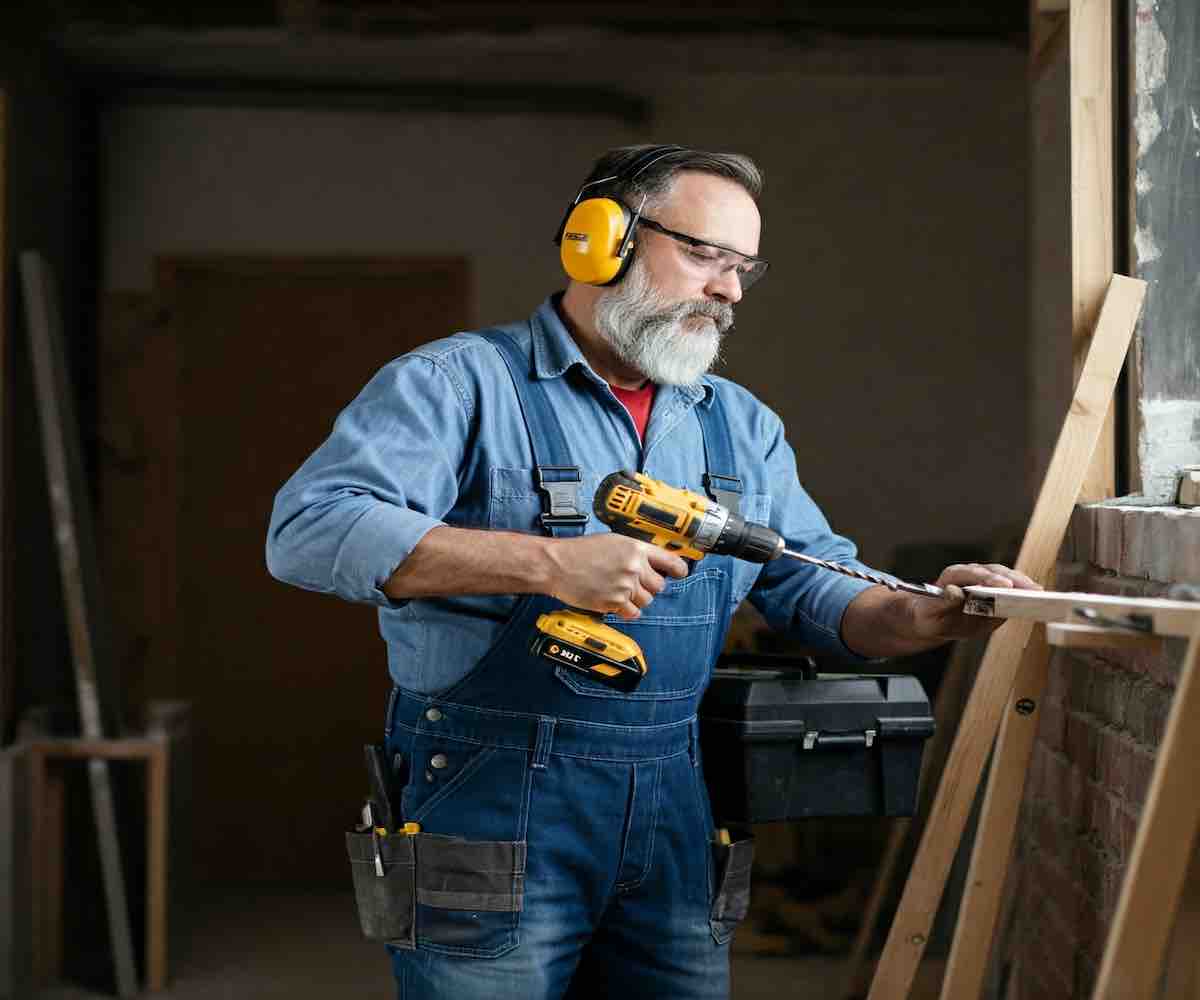
A contractor wearing ear muffs while operating a power tool.
Hand Protection: Work Gloves – Grip, Dexterity, and Safety
Your hands are your most valuable tools, and protecting them from cuts, abrasions, chemicals, and impacts is essential.
- Types of Work Gloves:
- Leather Gloves: Durable and provide good protection against abrasion.
- Mechanic's Gloves: Offer a good balance of dexterity and protection.
- Cut-Resistant Gloves: Made with materials like Kevlar or Dyneema to protect against cuts and lacerations.
- Chemical-Resistant Gloves: Used when handling hazardous chemicals.
- Impact-Resistant Gloves: Feature padding or TPR (thermoplastic rubber) to absorb impacts.
- Key Features to Consider:
- Material: Choose a material that suits the specific hazards of your work.
- Grip: Ensure the gloves provide a secure grip, even in wet or oily conditions.
- Dexterity: The gloves should allow for sufficient dexterity to handle tools and materials.
- Fit: Gloves should fit snugly but not be too tight, allowing for comfortable movement.
- Recommendations:
- Mechanix Wear Original Gloves: A popular choice for mechanics and general use.
- Ironclad Work Gloves: Known for their durability and innovative features.
- Ansell HyFlex Gloves: Offer excellent cut resistance and dexterity.
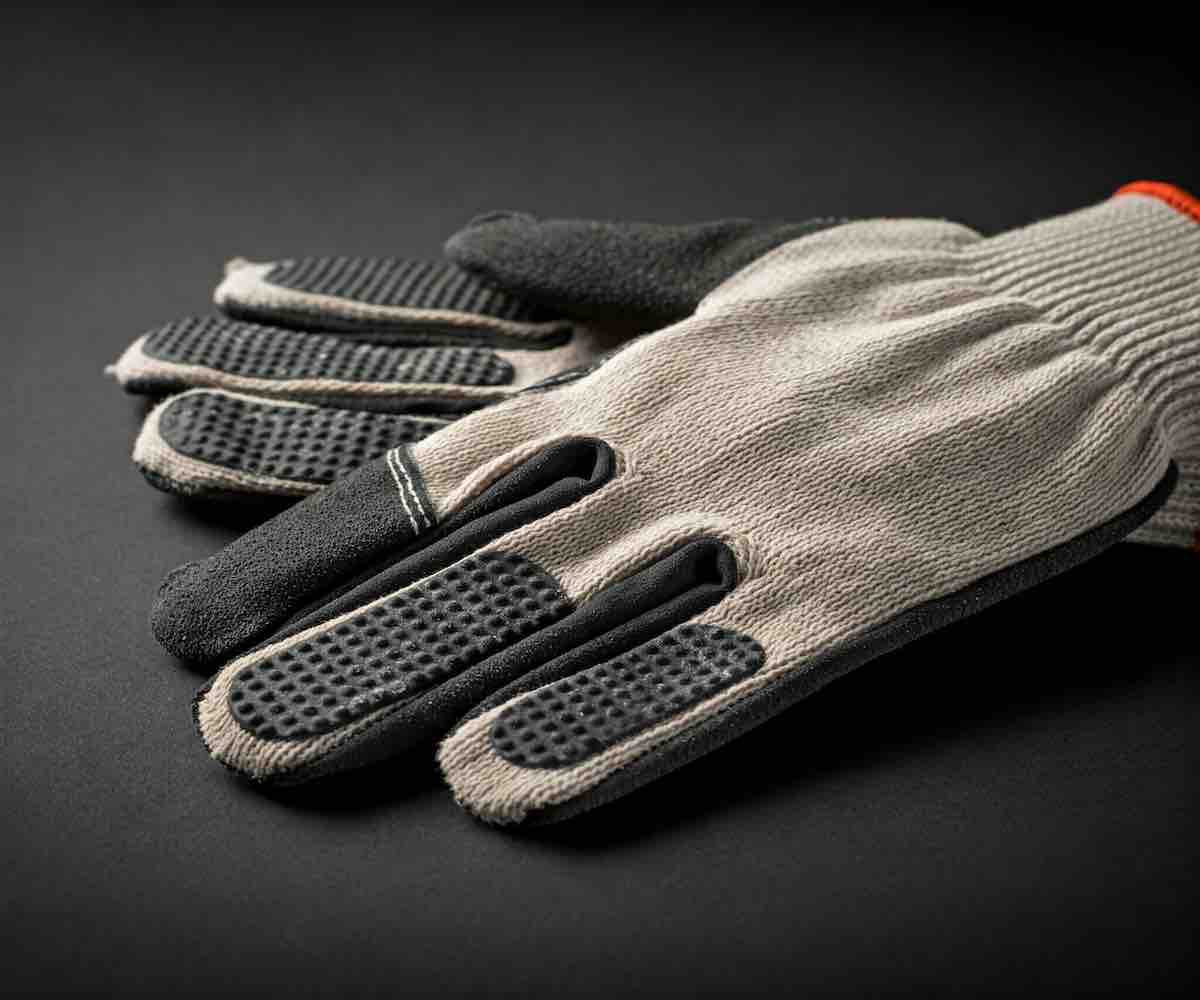
Foot Protection: Safety Boots – A Strong Foundation
Protecting your feet from falling objects, punctures, and slips is crucial on any job site. Safety footwear is a very important part of your PPE.
- Types of Safety Boots:
- Steel-Toe Boots: Feature a steel toe cap to protect against impacts and compression.
- Composite-Toe Boots: Made with non-metallic materials like Kevlar or carbon fiber, offering similar protection to steel toe but are lighter and don't conduct electricity.
- Metatarsal Guards: Protect the top of the foot from impacts.
- Puncture-Resistant Soles: Protect against sharp objects penetrating the sole.
- Slip-Resistant Soles: Provide traction on slippery surfaces.
- Electrical Hazard (EH) Rated: Protect against electrical shock.
- Key Features to Consider:
- Safety Standards: Look for boots that meet ASTM F2413 standards.
- Material: Leather is durable and breathable, while synthetic materials can be lighter and more water-resistant.
- Comfort: Choose boots with good arch support, cushioning, and a comfortable fit.
- Water Resistance/Waterproofing: Important for working in wet conditions.
- Recommendations:
- Timberland PRO Steel Toe Boots: A popular choice for their durability, comfort, and safety features.
- Keen Utility Work Boots: Known for their comfortable fit and innovative designs.
- Wolverine Steel Toe Boots: Offer excellent protection and durability.
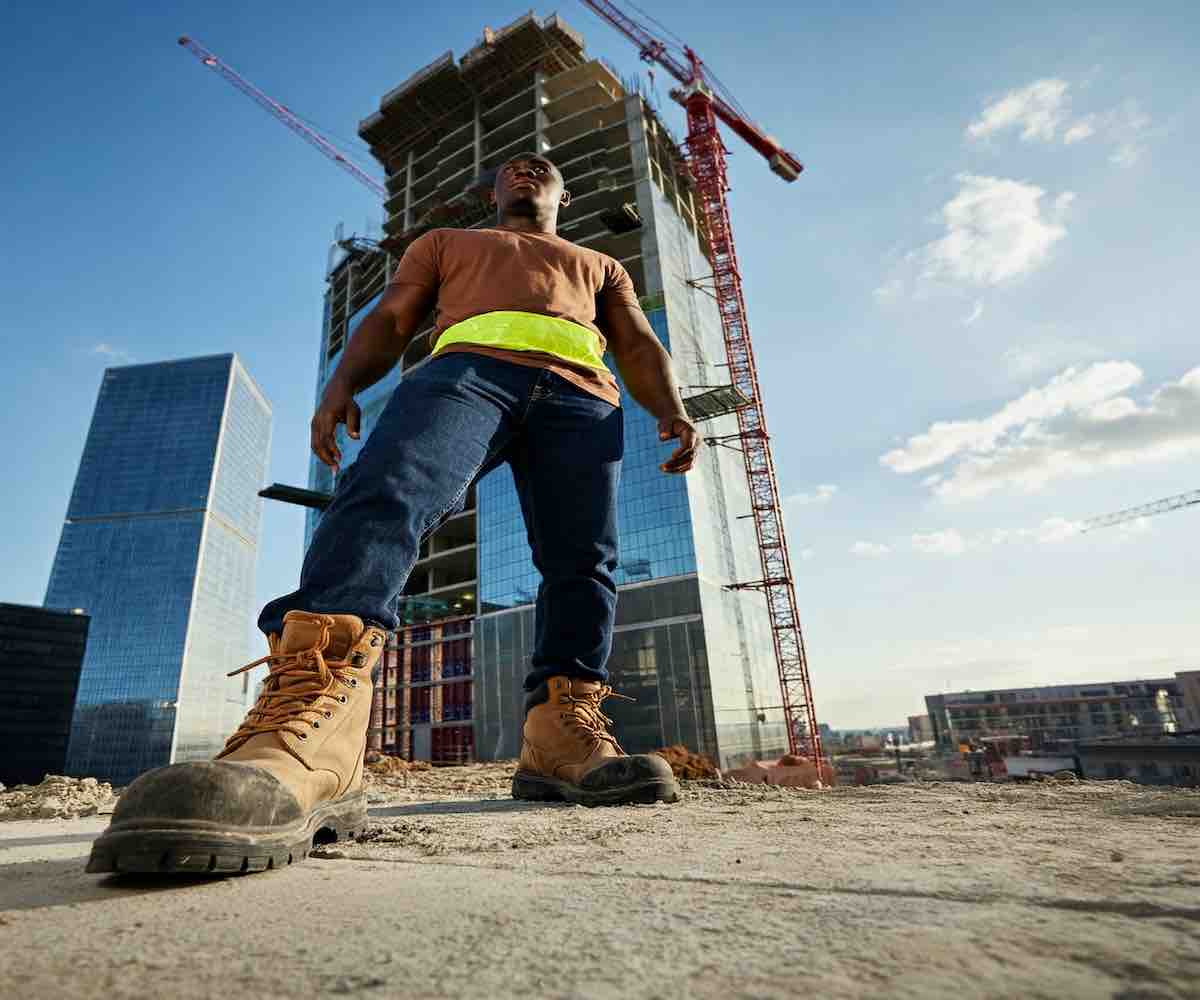
Respiratory Protection: Dust Masks and Respirators – Breathing Easy
Protecting your respiratory system from dust, fumes, and other airborne hazards is vital for long-term health.
- Types of Respiratory Protection:
- N95 Respirators: Filter out at least 95% of airborne particles, including dust and some fumes.
- P100 Respirators: Filter out at least 99.7% of airborne particles, offering a higher level of protection.
- Half-Face Respirators: Reusable respirators with replaceable cartridges for various hazards.
- Full-Face Respirators: Provide both respiratory and eye protection.
- Key Features to Consider:
- Filtration Efficiency: Choose a respirator that is appropriate for the specific hazards you'll be facing.
- Fit: A proper fit is crucial for effective respiratory protection.
- Comfort: Consider the respirator's weight, straps, and overall comfort for extended wear.
- Recommendations:
- 3M N95 and P100 Respirators: A trusted brand for respiratory protection.
- GVS Elipse Half-Face Respirators: Offer a comfortable fit and a low-profile design.
High-Visibility Clothing: Staying Seen, Staying Safe
Being visible on a job site, especially in low-light conditions or near traffic, is crucial for preventing accidents.
- Types of High-Visibility Clothing:
- Vests: The most common type of high-visibility clothing.
- Jackets: Provide more coverage and warmth in colder conditions.
- Shirts: Available in long-sleeve and short-sleeve options.
- Pants: For maximum visibility, especially in high-traffic areas.
- Key Features to Consider:
- ANSI/ISEA Classes: Class 1, 2, and 3, with Class 3 providing the highest level of visibility.
- Reflective Material: Ensure the clothing has high-quality reflective tape that meets industry standards.
- Color: Fluorescent yellow-green, orange, and red are the most common colors.
- Material: Choose breathable and comfortable materials for all-day wear.
- Recommendations:
- Radians Safety Vests: A wide range of styles and classes to choose from.
- ML Kishigo High-Visibility Apparel: Known for its quality and durability.
Fall Protection: Preventing Falls from Heights
Working at heights requires specialized safety equipment to prevent falls, which are a leading cause of serious injuries and fatalities in the construction industry.
- Key Components of a Fall Protection System:
- Harness: A full-body harness that distributes fall forces across the body.
- Lanyard: Connects the harness to an anchorage point, absorbing energy in case of a fall.
- Anchorage Point: A secure point capable of withstanding the forces of a fall.
- Self-Retracting Lifeline (SRL): Provides greater freedom of movement while still protecting against falls.
- Key Features to Consider:
- Harness Fit: Ensure the harness fits properly and is adjusted correctly.
- Lanyard Type: Choose a lanyard that is appropriate for the specific work environment and fall distance.
- Anchorage Point Strength: Verify that the anchorage point is capable of supporting at least 5,000 lbs.
- Recommendations:
- 3M Fall Protection: A leading manufacturer of fall protection equipment.
- Honeywell Miller Fall Protection: Offers a wide range of harnesses, lanyards, and SRLs
Other Essential Safety Gear:
- First Aid Kit: A well-stocked kit for treating minor injuries.
- Fire Extinguisher: Essential for any workshop or job site.
- Safety Cones and Signs: Used to mark off hazardous areas and direct traffic.
- Hearing Protection: This is very important. Be sure to get earmuffs or plugs with a high NRR.
Frequently Asked Questions (FAQs):
Q1: What is the most important piece of safety gear for a contractor?
A1: While all the gear mentioned is important, a hard hat is arguably the most crucial, as it protects your head from potentially fatal injuries. However, the most important piece of safety gear is the one that protects you from the specific hazards of your current task.
Q2: How often should I replace my safety gear?
A2: It depends on the specific item and its condition. Hard hats should be replaced every 2-5 years or immediately after any impact. Safety glasses should be replaced when scratched or damaged. Inspect all safety gear regularly and replace anything that shows signs of wear and tear or damage.
Q3: What are the OSHA requirements for safety gear on construction sites?
A3: OSHA has specific regulations for various types of PPE, depending on the hazards present. Consult OSHA's website and relevant standards for detailed information.
Q4: Where can I find high-quality safety gear for contractors?
A4:tendsupplies.com offers a curated selection of top-rated safety gear from leading brands, ensuring you have access to reliable and durable equipment that meets industry standards.
Q5: How do I know if my safety gear fits properly?
A5: Proper fit is crucial for the effectiveness of safety gear. Hard hats should fit snugly but not be too tight. Safety glasses should provide full coverage without obstructing vision. Hearing protection should create a tight seal. Gloves should fit snugly without restricting movement. Refer to manufacturer instructions for specific fitting guidelines.
Related Articles:
- OSHA's Top 10 Most Frequently Cited Standards for Construction
- Hard Hat Safety: Understanding Types, Classes, and Standards
- A Contractor's Guide to Choosing the Right Work Gloves
- Fall Protection: Best Practices for Working at Heights
- The Importance of High-Visibility Clothing on Construction Sites
Conclusion:
Investing in the right safety gear is an investment in your well-being and the success of your projects. As a contractor, your safety should be your top priority. By using this comprehensive guide, you can equip yourself with the essential PPE needed to mitigate risks and work confidently, knowing you're protected from head to toe.
At tendsupplies.com, we are committed to providing contractors with access to high-quality safety gear from the most trusted brands in the industry. We understand the importance of reliable and durable safety equipment, and we've carefully curated our selection to meet the demanding needs of professionals. From Honeywell Safety Products, to ERB Safety and 3M Safety Gear, we have you covered.
Don't compromise on safety. Visit tendsupplies.com today to explore our wide range of safety gear and find the perfect








